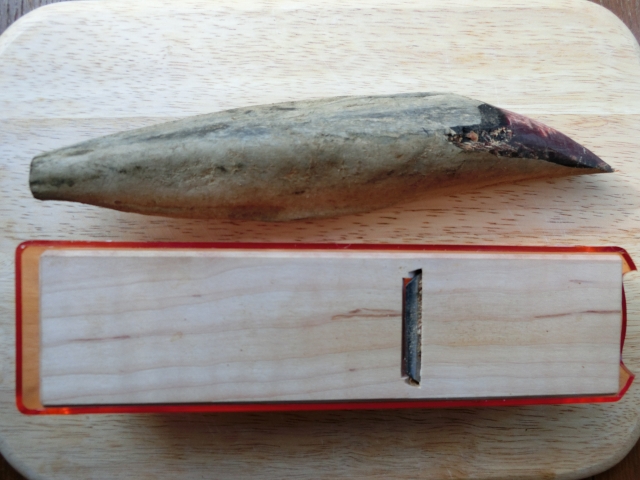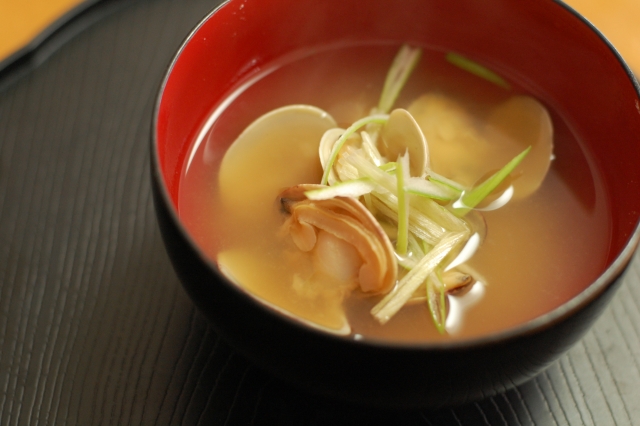Dashi and Umami – There’s Something Fishy, But It Tastes So Good
What would you count as the ultimate soul food of Japan? A simple combination of miso soup and rice? A bowl of soba or udon noodles with tsuyu broth? How about a hot and piping nabe (hot pot) or a hearty bowl of ramen on a cold winter day? Some of you may think of freshly cooked tempura with ten tsuyu (dipping broth) or generously thick slices of dashi-maki tamago (Japanese omelette). Whatever your answers are, the common ingredient they share is dashi, a basic stock used for cooking many traditional dishes. Dashi plays an essential part in Japanese cuisine. Dashi itself has a strong, distinct taste and aroma that reminds you of sea water minus the saltiness. It is packed with essence of umami, which is believed to be a component of taste in food. Umami is gaining attention in today’s culinary scenes worldwide yet it is still a riddle wrapped in a mystery inside an enigma.
How To Cook Dashi
A classic dashi is made from kombu (dried sea kelp) and katsuobushi (dried bonito flakes). Kombu is typically soaked in water in a pan overnight. The pan containing water and kombu will then be heated on a stove, with the kombu be removed just before the water starts to boil. This is because all the goodness of kombu would be soaked back once the water is brought to boil, leaving the water for dashi slimy with a bitter, pungent taste. Kombu will be swapped by katsuobushi at the boiling point. The shaved dried fish remains in the pan for only a few seconds. Once the katsuobushi flakes start ‘dancing’ in boiling water, it is time to take the pan off the stove. Let katsuobushi rest for a nanosecond then pour the entire water into a bowl through a sieve covered with cheesecloth or a paper towel. This clear dashi stock can be stored in the fridge for a couple of days. When making dashi, kombu and katsuobushi can be either added or substituted with the likes of niboshi (dried infant sardines), ago (flying fish) and dried shiitake mushrooms. By using the variants, the finishing taste will be slightly different but it is as good as the run-of-the-mill dashi and it can be used for preparing almost any Japanese dishes that contain dashi.


The Secret Of Umami
Umami directly translates as ‘the pleasant tastiness’. The notion of umami from dashi broth has been long sensed by the Japanese, but the expressions people used were obscure. For instance, people would discuss a dish has either a strong or weak presence of dashi. This had motivated Japanese scientists to get to the bottom of identifying what makes the taste of dashi stand out. Kikunae Ikeda, a scientist in chemistry and a professor of the then Tokyo Imperial University noticed that the miso soup tasted significantly different when kombu was added. By the early 1900s he discovered a chemical component of dashi, the glutamic acid (glutamate) and established the term ‘umami’. However, it then took almost eighty years for umami to be recognized as a scientific term.
Alongside sweetness, sourness, bitterness and saltiness, umami is said to consist the five elements of food taste which gives depth to savory dishes. Glutamate can be found and extracted from the likes of wheat, soy beans, mushrooms, meat, seafood and tomatoes. In later years other chemical compounds such as guanylic acid (found in shiitake mushrooms), inosinic acid in katsuobushi and niboshi, succinic acid in sake and shellfish were discovered as the components of umami. The satisfaction you get from a hearty bowl of miso soup or any type of soup, the rich aroma and flavor of fermented foods like natto or matured cheese, juicy meat with rich gravy, and the tanginess of rich tomato sauce are a few key examples of umami
Even though it is only recently that the term umami has become acknowledged and has been widely used by food connoisseurs around the world, there has been continuous attempts to express the deep flavor that is distinctive from other four elements. For instance, English terms ‘brothy’, ‘savory’ or ‘meaty’ have been used to express the diverse elements of umami. Over in Europe, a self-declared umami expert Laura Santtini started selling her original concoction of Italian-inspired umami paste in 2009. The paste comes in a tube which combines the essences of tomatoes, porcini mushrooms, garlic, anchovies, citrus fruits, and many more ingredients that are known to add depths to flavor. Since then she has been producing a wide variety of pastes, condiments, and sauces focusing on umami. And with the help of world-renowned Japanese chef Nobu Matsuhisa, Santtini went on to roll out a Japanese-inspired umami paste made of ingredients including miso, shiitake mushrooms, soy sauce, matcha, ginger, and yuzu.
A Japanese chef once said “Umami is all about getting the best out of an ingredient.” The Japanese surely know how to boost and enhance the flavor to its full potential from the olden days.
